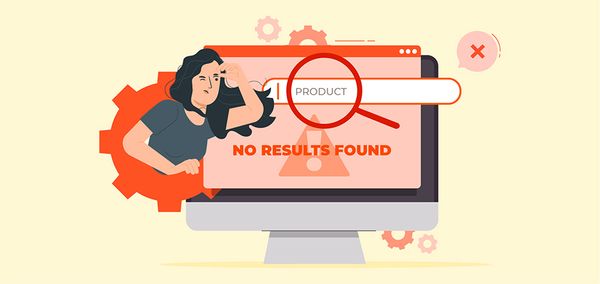7 Strategies to Increase the Customer Perceived Value

Getting the correct customer perceived value may be challenging for companies. On the surface, it appears to refer to the value consumers receive from a product in relation to its cost. However, that is just one element of what customers perceive as value (CPV). With so many alternatives available, statistics reveal that more than 80% of shoppers do their internet product research before making a decision.
Beyond just comparing and marking off the appropriate features and specs, this goes far beyond. Whether or not to purchase frequently depends on the value of your brand, products, or services. Therefore, if all your attention is on how much value people receive for the amount you charge, you're passing up chances to attract new clients and increase sales.
Because of this, this tutorial will focus on the influence of customers perceived value. You'll discover what it is, why it's essential to comprehend it, and how to enhance yours right now.
Customer Perceived Value: What Is It
Customer perceived value is the difference between the price a customer pays and the benefits they feel they will receive from using your brand. CPV (Customer perceived value) is all about how much customers believe your products are worth. How will their lives be altered by using and purchasing your products? What other benefits will consumers receive from purchasing your brand specifically?
Your product's perceived value will be positive and higher if the advantages are valued by customers as worth more than the price of buying it.
The Significance of Value Perception
Marketers have been conducting tests to entice their target audience since marketing transitioned to a customer-centric strategy. They now promote their offers rather than their goods or services.
| Get Started Now to Grow Your Online Business with the Best AliExpress Dropshipping Tool - DSers! |
Your marketing will succeed or fail, depending on how well you portray your offer. Customers choose between you and your competitors based on how valuable they consider your offer to be. Customers find your company more engaging when they perceive it to have value.
How Perception of Worth Affects Sales
Let's look more closely at how your customer perceives the value of your offer before we show you how to raise the perceived value. To know where to make improvements, you must understand the basic idea to avoid facing drawbacks:
How It Works
Value perception is a result. In this world, everything being offered has two things in common: its actual worth and perceived danger. The perceived cost of your offer is calculated by deducting these two figures. Your offer will be valuable for your consumers. Additionally, certain perceived hazards may deter buyers from making purchases.
The good thing is that you may modify the equation's variables, whatever you choose. Later on in this essay, we'll look at how you may accomplish that. Prioritise minimising perceived risk while simultaneously raising the offer's actual worth. No matter how excellent your offer is, buyers won't commit unless they are confident you can deliver on your promises.
Risks Involved in Perceived
Your consumers are incredibly dubious when it comes to money concerns. This scepticism needs to be addressed head-on. Obviously, not in a disrespectful manner. Doing this might imply that you are aware of their concerns. Additionally, making decisions with confidence will always result in sales. This is how all internet companies are designed.
Once they are certain that a choice is the best for them, your clients act; the marketer's task is to support them, so they can decide confidently.
The Real Value of Your Offer
Any product or service has some feature that offers your consumers a practical advantage. These advantages will address your client's issues. The placement of your offer, however, will increase your offer's true worth.
However, marketers frequently exaggerate the actual value of their offer. This does not influence client purchases from you as much as perceived danger does. Keep in mind that marketing has changed to a customer-centric strategy.
That implies that in this situation, the certainty of your clients is the actual worth. Once you use this strategy, you'll be more likely to witness gains in your marketing.
7 Methods to Increase Customer Perceived Value
These suggestions will show you how to improve the perceived worth of your product overall by boosting real value or lowering risks. It's critical to realise that you shouldn't place undue emphasis on the actual worth of your offer.
Instead, put more effort into reducing perceived risk to entice people to act on your offer. No matter how much you embellish, your offer has little genuine value.
1. Precisely Describe How your Real Value Works
This accomplishes two goals at once. Your true worth will rise while the perceived danger falls at the same time. It is considerably more effective than just listing the advantages of your offer if you have a video that demonstrates how your goods or service benefits your clients.
Your consumers won't be able to be convinced that your offer can address their problems based just on the advantages of your product. They would be curious to learn how it operates and what outcomes are possible. Through a demonstration, they'll explain how your offer may better assist them.
2. Appeal to the Emotions of your Clients
If executed properly, this value proposition is tremendously powerful. Your consumers make decisions based on reasoning and emotions while making purchases. Your marketing will be more effective the sooner you grasp this idea. So how do you touch on their feelings?
By identifying their issues and detailing how your solution would address them. You may make the deal more compelling by including additional perks. Possibly something like "free courses included."
3. Lower the Entry Barrier
Free trials are practical because they demand little to no commitment from your clients. The chance of not receiving what they had anticipated is eliminated. If they don't like it, they can cancel; no great problem.
They are more inclined to purchase your product or service from you once they have discovered how well it works for them. Since you have demonstrated that your products are effective, they have the confidence they need.
4. Make Reviews a Leverage Point
Your consumers now make various purchases. They will investigate any purchases before making them. Reviews of goods or services might be useful in this situation. The legitimacy of your offer is increased by testimonials from reliable sources.
Your consumers tend to believe that reviews help to reduce risk. They suggest that your offer is worthwhile, as others are interested in it. Even better would be for the reviews to originate from authoritative websites.
5. Focus on Quality
It might not always be immediately apparent how excellent a product actually is. This is particularly true when purchasing anything online and being unable to touch it. Accentuating quality is a significant factor in raising perceived worth.
Does your product use premium materials that outperform those provided by your competitors? Does it feature exceptional craftsmanship that is unmatched by anything else? Give detailed information to your clients about it. Although you don't have to shout it from the rooftops, slipping it subtly into your copy should be beneficial.
6. Make the Most of the FAQs
On your offer, people will have queries. It makes sense. If you can respond to such queries immediately, you will be able to receive an increased conversion rate. This is what the frequently asked questions section will do.
This area does not serve to enhance the value of your offer in any way. However, to respond to commonly asked issues like shipping details, money-back guarantee, subscription policy, etc. To reduce the apparent hazards, you should fully utilise this area.
7. Provide Excellent Customer Support
Things don’t end with sales. Don't forget that if they don't get help from you, your consumers can return your goods. You are being paid to provide them with ongoing value.
However, that depends on your industry. Customer Support is essential for all businesses, whether they sell one-time purchases or subscriptions. Customers need to know if they can get assistance if something goes wrong. By giving them quality customer support, you can build trust in the market.
Final Words
Being customer-focused will bring you great rewards. To increase customer perceived value and ensure that your consumers receive the most from your product, concentrate on reducing perceived risk.
However, never use manipulation as they can smell it a mile away. Keep in mind that every business transaction involves an exchange of value. Prior to receiving payment from clients, you must first provide value. It's how modern online commerce operates.













 Company
Company
 Why Choose DSers
Why Choose DSers
 Blog
Blog
 Help Center
Help Center




 Live Chat
Live Chat